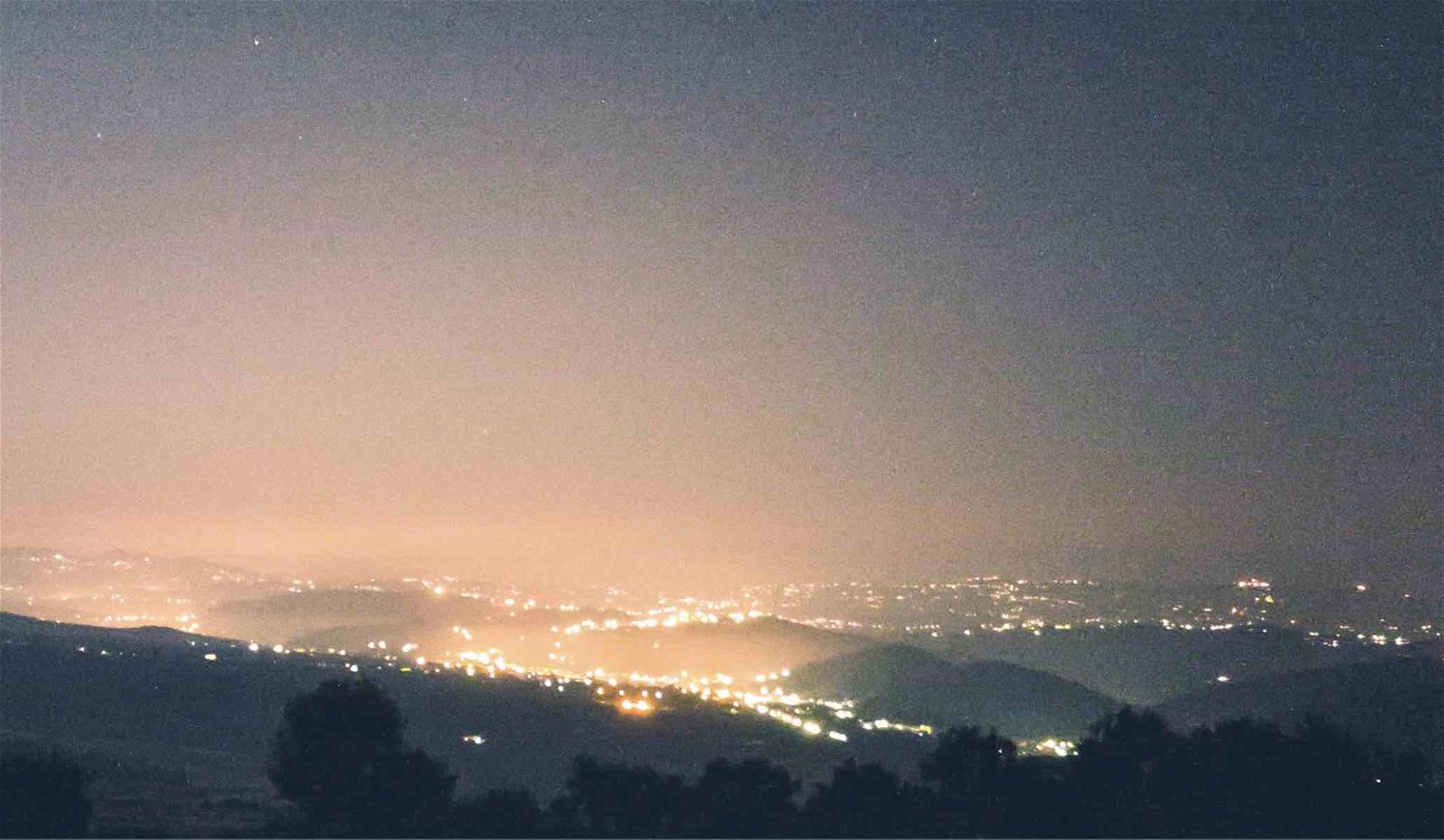“Am I wasting my time?” This had been the question I asked the two visitors who came to my home all the way from Washington, D.C., a few days ago.
“Not at all,” they assured me.
Over the past three decades, I have written a thousand scientific papers and three textbooks on the first stars and galaxies, reionization, 21-cm cosmology, cosmic inflation, dark matter, black holes, the search for extraterrestrial life, and the future of the Universe.
But lately, I became intrigued by the anomalous shape and non-gravitational acceleration of the first interstellar object `Oumuamua, and the unprecedented material strength of the first interstellar meteor, IM1. But my question to my guests had to do with whether there could be an extraterrestrial technological origin to some of the anomalous objects that the US government cannot identify in our sky.
There is no clear-cut scientific data that indicates the nature of Unidentified Aerial Phenomena (UAP). And this is precisely the reason why I am leading the Galileo Project, which is currently operating a new observatory at Harvard University and planning to assemble at least two others this year.
In particular, I have been working for decades on the nature of dark matter in the Universe. Just as in the case of UAP, the nature of this substance is unknown, but the intellectual culture among cosmologists is open-minded. It has been considered legitimate to explore hypothetical axions, the lightest supersymmetric particles, weakly-interacting particles of a huge variety of masses, or primordial black holes, as possible explanations for the nature of dark matter. Such possibilities inspired experimental work that ruled out parameter space. Innovation was cultivated by raw curiosity because the nature of something is puzzling.
Consider that in contrast to the way scientists regard UAP. The SETI community banned any discussion on UAP in its conferences. Many SETI practitioners are not only lukewarm to the possibility that UAP may represent technosignatures of extraterrestrial origin, but they would prefer not to even hear about this possibility in their conferences.
The fact that I am agnostic and willing to figure out the answer from new data is considered a “problem” to some of them, so much so that a 2021 commentary from Seth Shostak about the legitimacy of scientific inquiry into the nature of UAP is regarded as a rare gesture of generosity. Traditionally, the SETI community was defined by the pioneering work of Frank Drake as the search for radio and laser signals. But what if instead of waiting for a phone call, we entertain the possibility that there is a package in our mailbox and search for it? Should this be regarded as such a radical possibility for it to be avoided in scientific conferences?
The response of the SETI community to UAP research is a remarkable display of academic intolerance to a particular variant of the search for “technosignatures,” akin to a cat that is used to drinking cow milk and deeply loathes the use of the word `milk’ for almond milk. It would be unprofessional for particle physicists who are trying to detect the lightest supersymmetric particle by smashing protons at high energies in the Large Hadron Collider to ban any discussion about axions in their scientific conferences.
The day job of intelligence agencies and military personnel is to monitor the sky for objects that may pose national security threats to the safety of the nation. They will be the first to notice anomalous objects in the sky, such as UAP. It is the civil duty of scientists, such as those engaged in open data within the Galileo Project, to help them figure out the nature of UAP. The sky is not classified.
There is, of course, a lingering possibility that I am naïve and UAP are smoke and mirrors. In that case, we will find out. This is why I asked my guests from DC whether I may be wasting my time. I have no access to classified data, and the publicly available data is not convincing. But the known facts are intriguing enough to get me going. Just as the nature of dark matter inspired me to write many scientific papers as a theoretical astrophysicist.
Of course, the reason UAP research is toxic to so many scientists is the unsubstantiated claims by people who have witnessed unusual phenomena, to the point that a hole in the clouds is argued to be a “wormhole” or a “faster than light” channel for travel. This may not be more fantastical than working on a wormhole as a mathematical construct in the extra dimensions of string theory. But what “believers” on all sides fail to appreciate is that new physics requires exquisite data, not low-quality data.
New physics is not a consequence of poor data. Rather, it is about getting extremely high-quality data that leaves us with no other option than to consider new physics beyond any reasonable doubt. The fact that twenty years ago, someone claimed to see dark objects moving through the air extremely fast without creating a fireball does not make a similar claim by Ukrainian astronomers corroborating evidence for new physics. Instead, we need triangulation to be sure of the distance to these dark objects, and only then can we claim that they move at such high speeds that the lack of a fireball around them is anomalous.
The path to new scientific knowledge is paved by high-quality data from well-calibrated instruments that are fully understood and under control. Not collecting this data by guessing the answer in advance is a circular argument because we are not allowing nature to inform us about the truth. Indeed, getting the answer requires a major effort, and extraordinary evidence requires extraordinary funding. But if scientists are funded and willing to engage in finding the evidence, they should be allowed to present their scientific results at related conferences.
Under the current circumstances regarding UAP, it makes the most sense to collect new data rather than argue about the implications of compromised data from the past or to ask the government to declassify the data that it collected with classified sensors over strategic sites.
What surprises me is how science is vulnerable to the same weaknesses as politics. Polarization drives people apart at times when we should all unite around the goal of gathering better evidence out of raw curiosity. Our fundamental flaw is the temptation to invent a storyline before we know all the facts. This leads to opposing points of view, creating tribes of conviction and hate.
Recently, I chose to start my lectures by stating that I am a farm boy. This statement has two components. The first is that I was born on a farm and wish to find the truth directly from nature and not from the gospel. We may call it: “From farm to Table” science. The second is that I am still the same boy as I was half a century ago. I see my life as a learning experience and I ask questions at the dinner table to which the “adults in the room,” be it SETI professionals or mainstream astronomers, have well-prepared but unsubstantiated answers. When I notice that they make no sense, I leave the room and search for the evidence – the way that a curious kid would do.
Gladly, I am not alone. The company of the Galileo Project’s team, supporters, and funders makes my life worth living. And if we find anything along the way, you will be the first to know. Just be patient – scientific data gathering takes time. But if there is low-hanging fruit out there – it will not be long before you’ll know about it.
Avi Loeb is the head of the Galileo Project, founding director of Harvard University’s – Black Hole Initiative, director of the Institute for Theory and Computation at the Harvard-Smithsonian Center for Astrophysics, and the former chair of the astronomy department at Harvard University (2011-2020). He chairs the advisory board for the Breakthrough Starshot project, and is a former member of the President’s Council of Advisors onScience and Technology and a former chair of the Board on Physics and Astronomy of the National Academies. He is the bestselling author of “Extraterrestrial: The First Sign of Intelligent Life Beyond Earth” and a co-author of the textbook “Life in the Cosmos”, both published in 2021. His new book, titled “Interstellar”, is scheduled for publication in August 2023.

